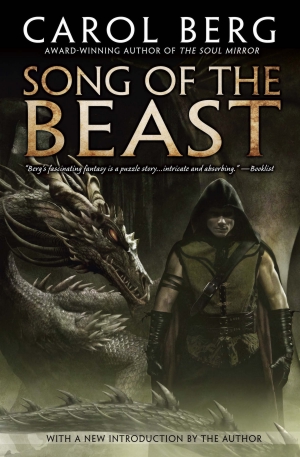Dave Smeds has authored novels (including The Sorcery Within and X-Men: Law of the Jungle), screenplays, comic book scripts, and articles, but is best known for his short fiction. His work has graced the pages of Asimov's SF, F&SF, Realms of Fantasy, and a plethora of anthologies, including most particularly the Sword and Sorceress series and the Lace and Blade series. His wonderful short fiction piece, "The Wind's Kiss," first appeared in Lace and Blade 4. It's a marvelous story, exquisitely written, full of pitch-perfect heart. Now it's also available in Dave's collection Swords, Magic, and Heart (see the cover below).
Deborah J. Ross: Tell us a little about yourself. How did you come to be a
writer?
Dave Smeds: I
loved fiction from an early age. I was particularly drawn to stories of
imaginary worlds, or at least by settings that were in effect imaginary, such
as Mars as depicted by Edgar Rice Burroughs. At age fifteen, it occurred to me
I might be able to write a short story or two. I did that. The result was crap,
of course, but every time I did another story or fragment of a novel, I could see
how to improve. (It was, as you might imagine, REALLY OBVIOUS how I could
improve.) I felt driven to eventually write something at a level I’d want to
read if someone else had written it.
DJR: What
inspired your story in Lace and Blade 4?
DS: There is a great deal of me in “The
Wind’s Kiss.” The fulfillment I feel in being a father. The contemplation of
the pioneer life led by my ancestors as they moved westward, often literally
dwelling right at the edge of civilization, first settlers on the scene. The
vital need in our hearts for passion between, and admiration of, one’s lover.
However, there is also a more specific inspiration for this particular piece.
In August, 2016, I was finally able to take a journey through Nebraska. For the
first time in my life, and quite possibly for the last time, I visited the
grave of my great great grandmother, Marancy Alexander Warner. The land there
has a windswept, deeply conscious aspect. I wanted to install that presence in
my fiction as soon as possible, and as it happened, that sort of setting and
mood was perfect for what I wanted to write for Lace and Blade 4.
DJR: What
authors have most influenced your writing? What about them do you find
inspiring?
DS: In the early days, I never thought of
myself as deeply influenced by any particular author, except perhaps in the
sense that I loved to write sword-and-sorcery, and back then, anyone doing that
was standing on the shoulders of Robert E. Howard and J.R.R. Tolkien. In
retrospect, I see L. Frank Baum’s influence upon the way I structure a story.
Baum did not write The Hero’s Journey. He wrote The Heroine’s Journey. That is
to say, he wrote books in which the protagonist — usually a girl — makes
alliances, as opposed to the Campbell paradigm where a young man pulls himself
up by the bootstraps, stands alone, and takes sole credit for defeating an
antagonist. I prefer the complexity and subtlety of The Heroine’s Journey.
DJR: Why do
you write what you do, and how does your work differ from others in your genre?
DS: At first I wrote to prove I could do
it. Next I wrote to earn money. Both motivations, in my view, demanded that I
write the best work I could, so in that respect, I have no regrets. But I write
now with the awareness that an author of fiction has an obligation to inject
meaning into an essentially meaningless universe. That’s our job as human
beings. We are creatures of pattern recognition. It’s our chief survival trait.
But a fiction writer must do it better than anyone. Hard to do. However, at
this point in my life I’ve proven I can write many types of fiction and I’m at
a point where I don’t need the money, really, so what keeps me putting the
words down on the chance it will move a reader in a way that would not have
happened otherwise. As said, hard to do. I try anyway.















